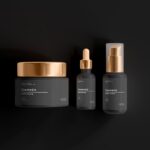After undergoing laser hair removal, you may find yourself eager to return to your regular exercise routine. However, understanding the importance of post-laser hair removal exercise is crucial for ensuring optimal results and minimizing any potential side effects. The skin in the treated areas can be sensitive and may require special care during the healing process.
Engaging in the right type of exercise can help you maintain your results while promoting healing and comfort. Exercise plays a significant role in your overall well-being, but after laser hair removal, it’s essential to approach it with caution. The laser treatment targets hair follicles, which can leave your skin feeling tender and vulnerable.
By being mindful of your physical activity, you can avoid complications such as irritation or inflammation. This period is not just about avoiding discomfort; it’s also about allowing your skin to recover fully so that you can enjoy the long-term benefits of the treatment.
Key Takeaways
- Post-laser hair removal exercise is important for promoting blood circulation and reducing the risk of ingrown hairs.
- High-impact exercises such as running and weightlifting should be avoided after laser hair removal to prevent irritation and discomfort.
- Recommended exercises for aftercare include low-impact activities like walking, swimming, and cycling to maintain a healthy level of physical activity.
- To exercise safely after laser hair removal, it’s important to wear loose-fitting clothing, apply sunscreen, and avoid excessive sweating to prevent irritation.
- Exercise can benefit the healing process by reducing inflammation, promoting skin regeneration, and improving overall well-being.
Types of Exercise to Avoid After Laser Hair Removal
When it comes to post-laser hair removal exercise, certain activities should be avoided to ensure your skin heals properly. High-impact workouts, such as running or intense cardio sessions, can lead to excessive sweating and friction on the treated areas. This can exacerbate any irritation or redness, making it crucial to steer clear of these types of exercises for at least a few days following your treatment.
Additionally, activities that involve heavy lifting or strenuous movements should be avoided. These exercises can increase blood flow and heat in the body, which may lead to discomfort in the treated areas. It’s essential to listen to your body and recognize when it’s best to take a step back from your usual routine.
By doing so, you can prevent any adverse reactions and ensure a smoother recovery process.
Recommended Exercises for Optimal Aftercare
While there are certain exercises to avoid, there are also many gentle activities that you can engage in after laser hair removal. Low-impact exercises such as walking or light cycling are excellent options that allow you to stay active without putting undue stress on your skin. These activities promote circulation and can help with the healing process while keeping you comfortable.
Another great option is swimming in a pool with clean water. The buoyancy of the water can provide a soothing effect on your skin, and the gentle movements can help maintain flexibility without causing irritation. Just be sure to avoid hot tubs or saunas, as the heat can aggravate sensitive skin.
By choosing the right types of exercise, you can support your body’s recovery while still enjoying physical activity.
Tips for Exercising Safely After Laser Hair Removal
| Tips for Exercising Safely After Laser Hair Removal |
|---|
| Avoid direct sun exposure on the treated area |
| Avoid hot showers or baths immediately after treatment |
| Avoid strenuous exercise for 24-48 hours |
| Wear loose-fitting clothing to prevent irritation |
| Apply aloe vera or soothing lotion to the treated area |
To ensure that you exercise safely after laser hair removal, it’s important to follow a few key tips. First and foremost, always listen to your body. If you feel any discomfort or notice increased redness in the treated areas, it’s best to stop and rest.
Your skin is still healing, and pushing yourself too hard can lead to complications. Another important tip is to wear loose-fitting clothing during your workouts. Tight clothing can cause friction against your sensitive skin, leading to irritation.
Opt for breathable fabrics that allow your skin to stay cool and comfortable. Additionally, consider applying a soothing lotion or gel recommended by your laser hair removal professional before exercising to help protect your skin.
How Exercise Can Benefit the Healing Process
Engaging in light exercise after laser hair removal can actually benefit your healing process in several ways. First, physical activity promotes blood circulation, which is essential for delivering nutrients and oxygen to the skin. This increased blood flow can help speed up the healing process and reduce any swelling or inflammation that may occur after treatment.
Moreover, exercise releases endorphins, which are natural mood boosters.
By incorporating gentle movement into your routine, you not only support your physical recovery but also enhance your mental well-being during this time.
Incorporating Gentle Stretching and Yoga into Your Post-Laser Hair Removal Routine
Gentle stretching and yoga are excellent additions to your post-laser hair removal routine. These practices focus on slow movements and deep breathing, which can help relax both your body and mind. Stretching can improve flexibility and reduce muscle tension without putting stress on your skin.
Yoga, in particular, offers a holistic approach to recovery. Many yoga poses promote relaxation and mindfulness, allowing you to connect with your body during this sensitive time. Just be sure to choose gentle classes or routines that avoid any poses that may put pressure on the treated areas.
By incorporating these practices into your routine, you can create a calming environment that supports healing.
Maintaining Hydration and Nutrition for Exercise After Laser Hair Removal
Staying hydrated and maintaining proper nutrition is vital for supporting your body during the recovery process after laser hair removal. Drinking plenty of water helps keep your skin hydrated from within, which is essential for healing. Dehydration can lead to dryness and irritation, so make it a point to drink water throughout the day, especially before and after exercising.
In addition to hydration, focusing on a balanced diet rich in vitamins and minerals can further enhance your recovery. Foods high in antioxidants, such as fruits and vegetables, can help combat inflammation and promote skin health. Incorporating lean proteins will support tissue repair while healthy fats contribute to overall skin hydration.
By prioritizing both hydration and nutrition, you set yourself up for a smoother recovery journey.
Consulting with Your Laser Hair Removal Professional for Personalized Exercise Recommendations
Finally, one of the best steps you can take after laser hair removal is to consult with your laser hair removal professional for personalized exercise recommendations. They have a deep understanding of your specific treatment and can provide tailored advice based on your individual needs and skin type. This personalized approach ensures that you receive guidance that aligns with your unique situation.
Your professional may suggest specific timelines for when you can safely resume certain activities or recommend particular exercises that are best suited for your recovery phase. By working closely with them, you can feel more confident in your post-treatment care and make informed decisions about how to incorporate exercise into your routine effectively. In conclusion, understanding how to navigate exercise after laser hair removal is essential for ensuring optimal results and promoting healing.
By avoiding high-impact activities, engaging in gentle exercises, maintaining hydration and nutrition, and consulting with professionals, you can support your body during this sensitive time while still enjoying the benefits of physical activity. Remember that patience is key; taking care of yourself now will pay off in the long run as you enjoy smooth, hair-free skin.
After undergoing laser hair removal treatment, it is important to follow proper aftercare instructions to ensure the best results. One crucial aspect of aftercare is incorporating exercise into your routine. Exercise can help improve circulation, which can aid in the healing process and reduce the risk of complications. To learn more about the benefits of exercise after laser hair removal, check out this informative article on inlaserhairremoval.com.
FAQs
What is laser hair removal aftercare exercise?
Laser hair removal aftercare exercise refers to the physical activities and movements that should be avoided or modified after undergoing a laser hair removal treatment. This is to ensure proper healing and to minimize the risk of complications.
Why is it important to consider exercise after laser hair removal?
It is important to consider exercise after laser hair removal because certain activities can increase the risk of complications such as skin irritation, inflammation, or even scarring. Following the recommended aftercare guidelines can help ensure the best results from the treatment.
What types of exercise should be avoided after laser hair removal?
High-impact activities such as running, jumping, or intense weightlifting should be avoided after laser hair removal. These activities can increase blood flow to the treated area and potentially cause irritation or damage to the skin.
How long should I wait to resume exercise after laser hair removal?
It is generally recommended to wait at least 24-48 hours before resuming light exercise after laser hair removal. However, it is best to follow the specific aftercare instructions provided by your laser hair removal technician or dermatologist.
Are there any specific exercises that are safe to do after laser hair removal?
Gentle, low-impact exercises such as walking, yoga, or light stretching are generally safe to do after laser hair removal. These activities are less likely to cause irritation or damage to the treated area.
What should I do if I experience discomfort during exercise after laser hair removal?
If you experience discomfort during exercise after laser hair removal, it is important to stop the activity and allow the treated area to rest. If the discomfort persists or worsens, it is recommended to consult with your laser hair removal technician or dermatologist for further guidance.








